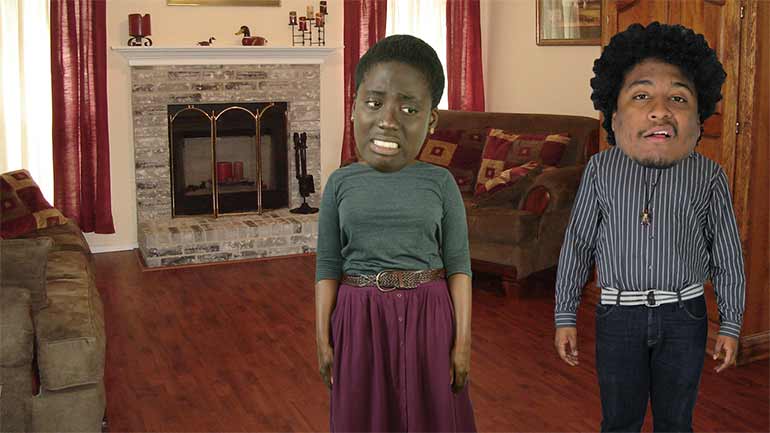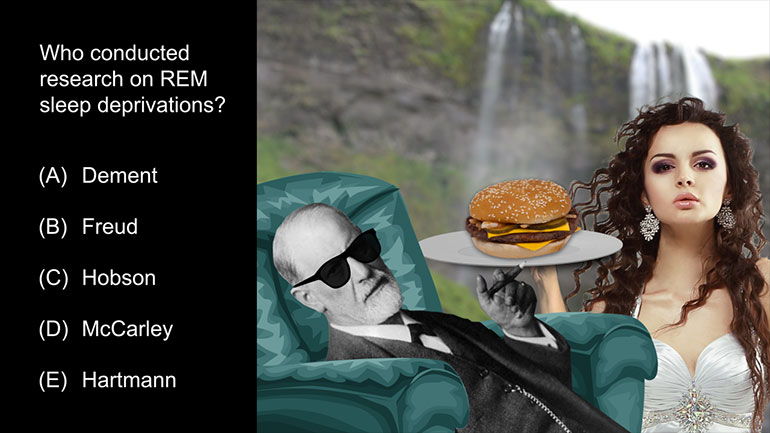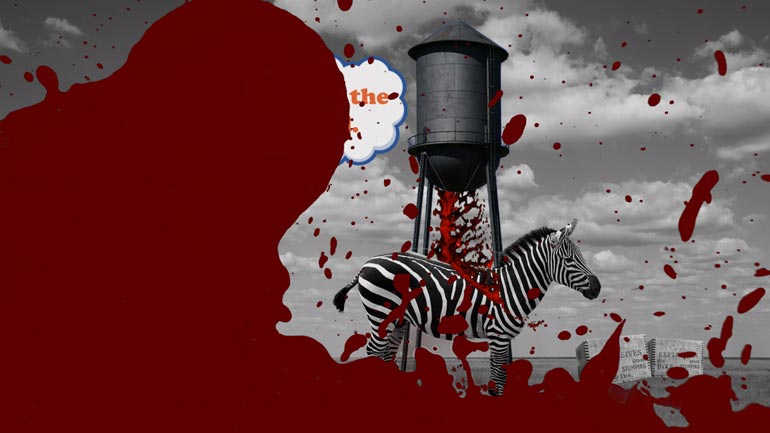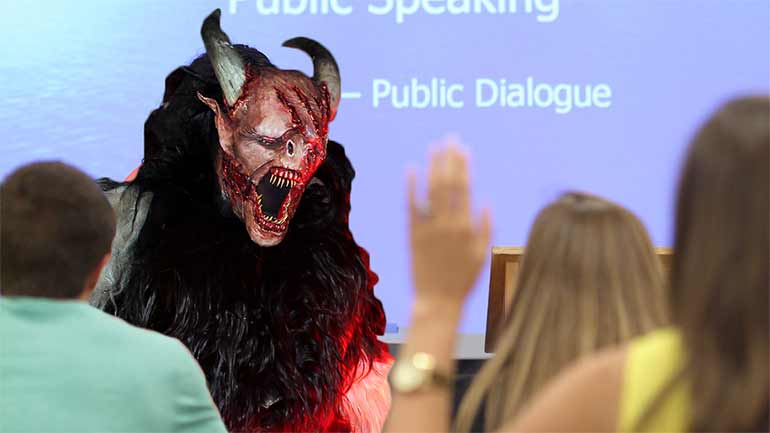ShmoopTube
Where Monty Python meets your 10th grade teacher.
Search Thousands of Shmoop Videos
AP Psychology 2.4 Research Methods 4 Views
Share It!
Description:
AP Psychology 2.4 Research Methods. This type of study is called a...what?
Transcript
- 00:04
And here's your shmoop du jour brought to you by camouflage it's
- 00:07
what we wish we were an expert in every time our crush catches us daring across [Man hides behind tree as girl looks at him]
- 00:11
the cafeteria all right here's our question Cammy is interested in studying
- 00:15
bonobos in Africa she sets up a camouflage look
- 00:18
out in a tree and patiently wait to watch bonobos in their undisturbed
Full Transcript
- 00:23
habitat this type of study is called a what and here the potential answers...
- 00:30
alright let's start by getting rid of e the
- 00:34
Safari method well believe it or not camis camouflage isn't going to be super [Woman in a car on a safari drive]
- 00:38
effective it she's rolling around Africa and a 2-ton Land Rover animals have
- 00:42
these pesky little things called ears there's also one other slight issue with [A monkey eating a banana]
- 00:47
this answer that Safari method isn't real so let's weed that one out of the
- 00:51
pack right away we could also weed out D sorry D it's survival of the fittest
- 00:55
around these parts why well the Hawthorne method is another [Scientists appear in a lab]
- 00:58
thing that said just doesn't exist the Hawthorne effect however which does
- 01:02
exist it's when the thing being observed changes its behavior for the better
- 01:06
based on the knowledge that well it's being observed you know like when you
- 01:09
catch your dad watching you in the rearview mirror and you just happen to [Boy slapping brother in the head]
- 01:12
be on your best behavior and you definitely we're not whacking your
- 01:14
little brother in the face with your jacket
- 01:16
two seconds earlier alright moving on see double-blind method well a double
- 01:20
blind experiment occurs when both the researcher and the participants are
- 01:23
unaware of which group is the test group in which group is the control group
- 01:27
we're not knocking the intelligence in the bonobo but we have a feeling they're [Bonobos in the forest]
- 01:31
less aware of whether or not they're in a certain group and more aware that
- 01:35
pilot poop they can fling it our intrepid researcher candy that means we [Bonobo flings poop at woman]
- 01:38
can get rid of C.. well let's in the herd a little more and get rid of be a case
- 01:43
study is the process of research which analyzes a specific case
- 01:51
that's not what camis doing and it's not what we're looking for [Cammy videoing a bonobo]
- 01:54
so that list leaves us with a naturalistic observation well
- 01:58
naturalistic observation is a type of descriptive research that involves
- 02:01
studying something in its natural and undisturbed habitat and as we can [Bonobos in their natural habitat]
- 02:05
plainly see Cammie setup a camouflaged lookout in a tree and I'm sorry since we [Cammy looking through bincoulars]
- 02:10
totally can't see because that's some really great camouflage and we set up
- 02:15
there in the lookout tree where are you well sounds like naturalistic [Cammy appears from behind a tree]
- 02:19
observation to us and not that we can see her or anything but we strongly
- 02:23
recommend Cammy duck that Bonobo has quite an arm on him [Cammy looking through binoculars]
Up Next
AP Psychology 1.1 Social Psychology. Which of the following best describes social psychology?
Related Videos
AP Psychology 1.1 States of Consciousness. Who conducted research on REM sleep deprivations?
AP Psychology 1.2 Cognition. Which of the following strategies would work best for generating new ideas?
AP Psychology 1.2 Sensation and Perception. The cells in the back of the eye that only see in black and white are called what?
AP Psychology 1.2 Social Psychology. What is the best choice for producing better productivity?




